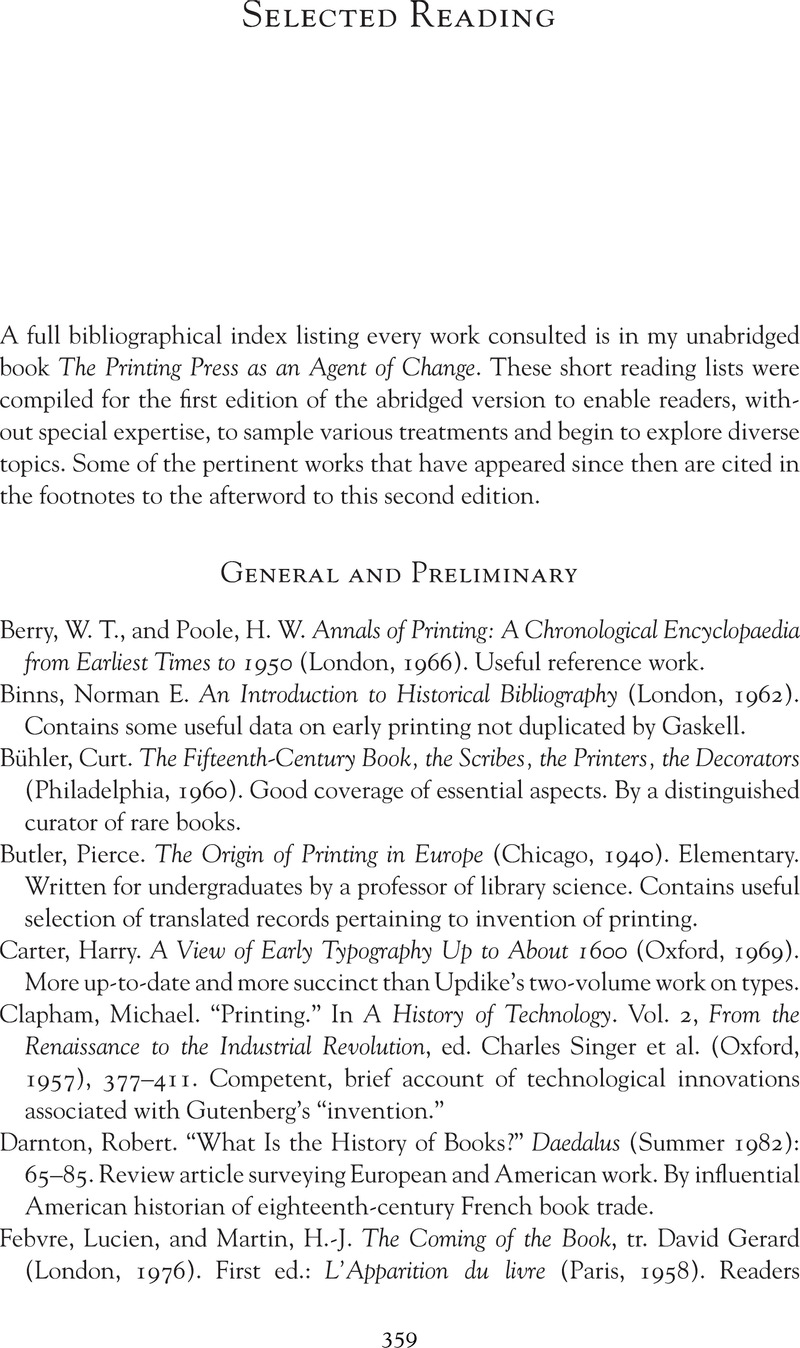Book contents
- Frontmatter
- Contents
- List of Illustrations and Maps
- Preface to the Second Edition
- Introduction
- THE PRINTING REVOLUTION IN EARLY MODERN EUROPE
- Part I THE EMERGENCE OF PRINT CULTURE IN THE WEST
- Part II INTERACTION WITH OTHER DEVELOPMENTS
- Afterword: Revisiting the Printing Revolution
- Selected Reading
- Index
- References
Selected Reading
Published online by Cambridge University Press: 28 May 2018
- Frontmatter
- Contents
- List of Illustrations and Maps
- Preface to the Second Edition
- Introduction
- THE PRINTING REVOLUTION IN EARLY MODERN EUROPE
- Part I THE EMERGENCE OF PRINT CULTURE IN THE WEST
- Part II INTERACTION WITH OTHER DEVELOPMENTS
- Afterword: Revisiting the Printing Revolution
- Selected Reading
- Index
- References
Summary

- Type
- Chapter
- Information
- The Printing Revolution in Early Modern Europesecond Edition, pp. 359 - 372Publisher: Cambridge University PressPrint publication year: 2005



